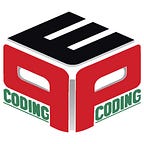In this blog, we will look at the Binary tree and also discuss its benefits, types, and applications.
What is Binary TREE? What are the types of Binary trees? Why are the benefits and applications of binary trees? This guide will answer all of these questions.
First, let us know what BINARY TREE is in brief:
Binary Tree: A binary tree is a hierarchical data structure in which each node has no more than two offspring, referred to as the left and right child.
Each node consists of 3 parts:
- Pointer to the left subtree
- Pointer to the right subtree
- Element of the data
The node at the top of the tree is considered as the root. A NULL pointer represents an empty tree.
The root node in the binary tree shown above is A. The tree comprises ten nodes, with five internal nodes (A,B,C,E,G) and five exterior nodes (D,F,H,I,J). The tree stands three stories tall. B is the parent of D and E, while D and E are B’s offspring.
Binary trees are mostly employed in computers for searching and sorting since they allow for the hierarchical storage of data. Insertion, deletion, and traversal are some typical operations that may be performed on binary trees.
Some common terminologies of the Binary tree
Root: The root is the tree’s highest node.
Parent: Every node in a tree (excluding the root) is connected by a directed edge to precisely one other node. This node is called a parent.
Child: When going away from the root, a node that is directly related to another node is called a child node.
External Node: A node with no children is referred to as a leaf/external node.
Internal node: A node that has at least one child.
Node Depth: The number of edges from the root to the node that makes up a node’s depth.
Node height: the number of edges from the node to the deepest leaf. The height of the tree and the root are equal.
Benefits of a binary tree
- Searching in a binary tree gets more efficient.
- Six traversals are provided by a binary tree.
- Two of the six traversals provide the components in sorted order
- The maximum and minimum components can be directly selected
- It is used to traverse graphs and to transform expression to postfix and prefix forms.
Binary tree types (Based on Structure):
1. Rooted binary tree: It has a root node and at most two children for each node.
2. Full binary tree: It is a tree in which each node has either 0 or 2 children. The number of nodes, n, in a complete binary tree is at least n = 2h — 1 and no more than n = 2h+1–1, which is the tree’s height. In a full binary tree, the number of leaf nodes, l, is equal to the number of internal nodes, L, +1, i.e., l = L+1.
3. Perfect binary tree: It is a binary tree with two offspring at each inner node and all leaves having the same depth or level.
There are n = 2l-1 nodes in a perfect binary tree with l leaves.
l = 2h and n = 2h+1–1 in a perfect complete binary tree, where n is the number of nodes, h is the height of the tree, and l is the number of leaf nodes.
4. Complete binary tree: is one in which every level, save maybe the final, is entirely filled, and all nodes are as far left as feasible.
Floor(n/2) is the number of internal nodes in a complete binary tree of n nodes.
5. Balanced Binary tree: If a binary tree meets the following conditions, it is height-balanced.
The heights of the left and right subtrees differ by no more than one,
A balanced binary tree has a height of O(log n), where n is the number of nodes.
6. Degenerate Tree: A Degenerate tree is one in which each parent node has exactly one child node. It works similarly to a linked list.
Some applications of a binary tree:
- Binary Trees are commonly utilized as the basic data structure in Microsoft Excel and spreadsheets.
- The indexing of a Segmented Database is implemented using a Binary Tree.
- Binary Space Partition Trees are used in computer graphics, back face culling, collision detection, Ray Tracing, and game graphics techniques.
- Syntax Trees (Binary Trees with nodes representing operations) are used in compilers like GCC, AOCL, and others to construct arithmetic expressions.
- Binary Heap (Binary Tree form of Heap) is used to effectively build a Priority Queue, which is then utilized in the Heap Sort Algorithm.
- Binary Search Tree is used to effectively search entries and as a collision management mechanism in Hash map implementations.
- To facilitate quick memory allocation, a Balanced Binary Search Tree is utilized to represent memory.
So, if you want to learn more about Binary trees, visit Pepcoding NADOS 2.0 and learn from industry specialists to improve your coding abilities.
So, what are you waiting for?
Join NADOS today and become the next tech coder. Use our collaboration tools to collaborate with your peers. You may also enroll in our online courses to learn from industry specialists and secure careers with a good salary.
We hope you found this blog helpful.
Also, read the following blogs:
https://medium.com/@pepcoding/how-to-become-a-professional-coder-1d97e8cbfa15
https://medium.com/@pepcoding/tips-and-tactics-to-crack-neet-exam-7df23e8dc7d7
https://medium.com/@pepcoding/an-ideal-business-analyst-a-brief-introduction-53f55a146eb7
